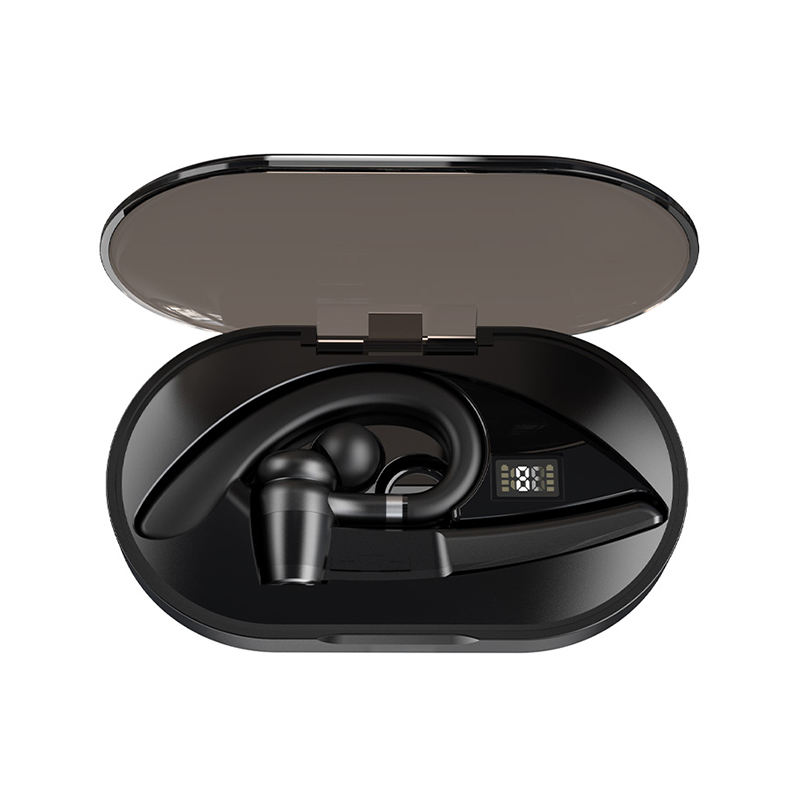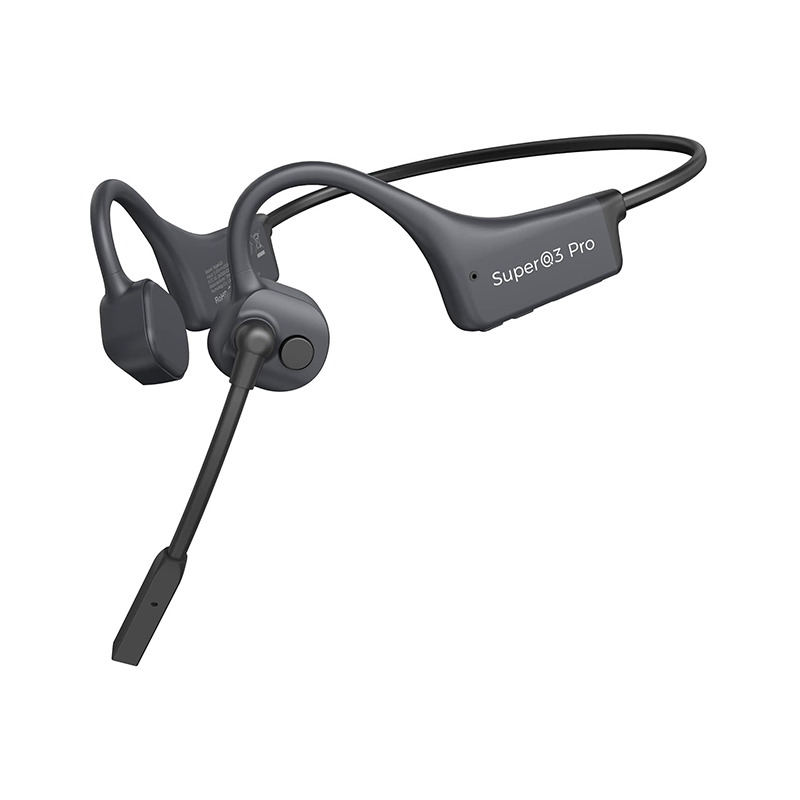How can a sleep aid speaker quietly lull you into deep sleep?
Release Time : 2025-10-23
In the fast-paced world of modern life, insomnia, difficulty falling asleep, shallow sleep, and frequent awakenings are plaguing an increasing number of people. Scrolling through phones, watching videos, listening to music with headphones—these common "sleep aids" can actually worsen insomnia due to blue light stimulation, ear canal pressure, or arousing content. Therefore, a smart device designed specifically for sleep—the sleep aid speaker—is quietly entering people's bedrooms, becoming a gentle guardian at night. It doesn't emit light, vibrate, or inhale. Simply through gentle sounds, it guides the brain from a chaotic state to tranquility, quietly leading you into deep sleep.
1. Using sound to create a "psychological safety zone"
The core principle of a sleep aid speaker is to play specific acoustic content to help the brain shift from a wakeful state dominated by the sympathetic nervous system to a relaxing mode dominated by the parasympathetic nervous system. Unlike standard speakers, which pursue high volume or high fidelity, it focuses on creating a low-stimulation, highly soothing listening environment. Whether it's the patter of rain, the gentle sound of ocean waves, the chirping of birds in the forest, or the low-frequency white noise that simulates a mother's heartbeat, these natural sounds can trigger a subconscious sense of security, transporting us back to the peaceful moments of life's earliest days. Scientific research shows that these regular, meaningless background sounds can effectively mask sudden noises in the environment, reduce sleep interruptions, and help the brain enter a state of relaxation more quickly.
2. Scientific Sound Effects, Precisely Guiding Brainwave Changes
High-end sleep aid speakers not only play natural sounds but also incorporate research findings from sleep science and neuroacoustics. These are brainwave frequencies associated with deep relaxation or light sleep. Long-term listening to these sounds can gradually train the brain to the low-frequency brainwave patterns necessary for sleep, achieving "sound-guided sleep." Furthermore, the gradual volume reduction and frequency shifting design simulate the physiological changes that occur during natural sleep, making the transition smoother.
3. Contactless Playback, Say Goodbye to the Constraints of Headphones
Many people sleep with headphones on, but prolonged use not only compresses the ear canal, restricting blood circulation, but can also lead to ear infections or hearing damage. Sleep Aid speakers feature low volume, directional or omnidirectional sound distribution, gently and evenly filling the bedroom with sound without requiring any physical contact. Simply place it on a nightstand or next to your pillow to immerse yourself in the sound. Some models also feature smart sensing, automatically shutting off when the user falls asleep, preventing interruptions caused by all-night playback, offering both energy savings and peace of mind.
4. Sound and Light Synchronization for an Immersive Sleep Ritual
Sleep Aid speakers also incorporate gentle lighting changes to create an immersive "sound and light co-frequency" experience. For example, while playing pre-sleep music, the lighting gradually fades from warm yellow to dark red, simulating a sunset. This suppresses the blue light that triggers melatonin production and helps the body naturally enter its sleep rhythm. When waking up in the morning, the gradually brightening morning light and birdsong simulate a sunrise, providing a gentle awakening and avoiding the startle of an alarm clock. This multi-sensory "sleep ritual" transforms falling asleep from a passive wait into an active, pleasurable process of relaxation.
5. Personalized Customization to Understand Your Sleep Habits
Sleep aid speakers typically come with a dedicated app, allowing users to select sound effects, set playback duration, and adjust the volume curve based on their preferences. Some high-end models also use a microphone to monitor ambient noise or the user's tossing and turning, dynamically adjusting the sound output. Some products even incorporate sleep tracking to analyze the user's sleep duration and deep sleep percentage, intelligently recommending the most suitable sleep aid program, truly understanding you the more you use it.
A sleep aid speaker is more than just a simple audio device; it's a "sleep companion" that listens and provides companionship. Using scientific sound language, it gently plucks the strings of your nerves, freeing you from chaotic thoughts and guiding you into a peaceful dream. In an age plagued by anxiety and information overload, it reminds us that true rest begins with the peace of your ears.
1. Using sound to create a "psychological safety zone"
The core principle of a sleep aid speaker is to play specific acoustic content to help the brain shift from a wakeful state dominated by the sympathetic nervous system to a relaxing mode dominated by the parasympathetic nervous system. Unlike standard speakers, which pursue high volume or high fidelity, it focuses on creating a low-stimulation, highly soothing listening environment. Whether it's the patter of rain, the gentle sound of ocean waves, the chirping of birds in the forest, or the low-frequency white noise that simulates a mother's heartbeat, these natural sounds can trigger a subconscious sense of security, transporting us back to the peaceful moments of life's earliest days. Scientific research shows that these regular, meaningless background sounds can effectively mask sudden noises in the environment, reduce sleep interruptions, and help the brain enter a state of relaxation more quickly.
2. Scientific Sound Effects, Precisely Guiding Brainwave Changes
High-end sleep aid speakers not only play natural sounds but also incorporate research findings from sleep science and neuroacoustics. These are brainwave frequencies associated with deep relaxation or light sleep. Long-term listening to these sounds can gradually train the brain to the low-frequency brainwave patterns necessary for sleep, achieving "sound-guided sleep." Furthermore, the gradual volume reduction and frequency shifting design simulate the physiological changes that occur during natural sleep, making the transition smoother.
3. Contactless Playback, Say Goodbye to the Constraints of Headphones
Many people sleep with headphones on, but prolonged use not only compresses the ear canal, restricting blood circulation, but can also lead to ear infections or hearing damage. Sleep Aid speakers feature low volume, directional or omnidirectional sound distribution, gently and evenly filling the bedroom with sound without requiring any physical contact. Simply place it on a nightstand or next to your pillow to immerse yourself in the sound. Some models also feature smart sensing, automatically shutting off when the user falls asleep, preventing interruptions caused by all-night playback, offering both energy savings and peace of mind.
4. Sound and Light Synchronization for an Immersive Sleep Ritual
Sleep Aid speakers also incorporate gentle lighting changes to create an immersive "sound and light co-frequency" experience. For example, while playing pre-sleep music, the lighting gradually fades from warm yellow to dark red, simulating a sunset. This suppresses the blue light that triggers melatonin production and helps the body naturally enter its sleep rhythm. When waking up in the morning, the gradually brightening morning light and birdsong simulate a sunrise, providing a gentle awakening and avoiding the startle of an alarm clock. This multi-sensory "sleep ritual" transforms falling asleep from a passive wait into an active, pleasurable process of relaxation.
5. Personalized Customization to Understand Your Sleep Habits
Sleep aid speakers typically come with a dedicated app, allowing users to select sound effects, set playback duration, and adjust the volume curve based on their preferences. Some high-end models also use a microphone to monitor ambient noise or the user's tossing and turning, dynamically adjusting the sound output. Some products even incorporate sleep tracking to analyze the user's sleep duration and deep sleep percentage, intelligently recommending the most suitable sleep aid program, truly understanding you the more you use it.
A sleep aid speaker is more than just a simple audio device; it's a "sleep companion" that listens and provides companionship. Using scientific sound language, it gently plucks the strings of your nerves, freeing you from chaotic thoughts and guiding you into a peaceful dream. In an age plagued by anxiety and information overload, it reminds us that true rest begins with the peace of your ears.







